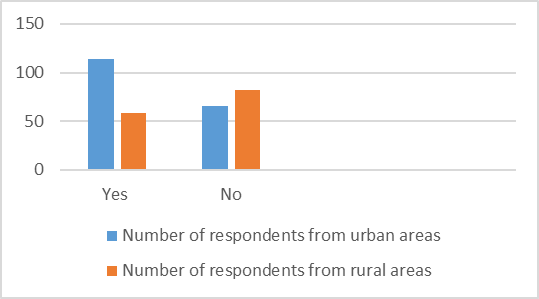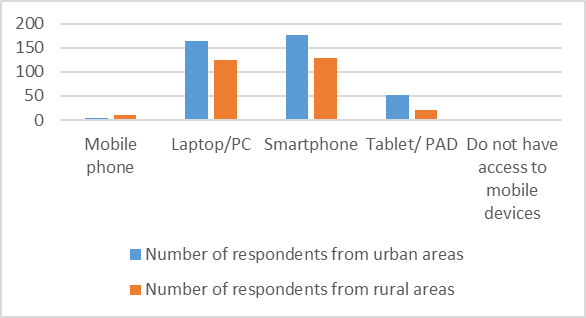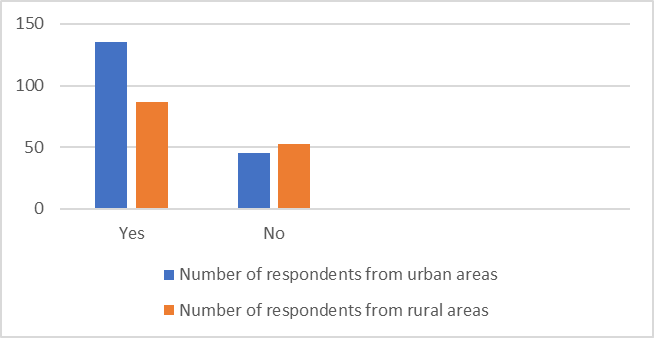Abstract
M-learning, as an educational innovation, has been facilitated by the spread of mobile communications technologies, by the enhancement of the performance of mobile devices. M-Learning includes the possibility to learn anywhere and anytime without permanent physical connection to a wired network. This can be done through mobile and portable devices. Technology and mobile technology in particular, has become an integral part of our lives. The mobile phone can be an educational tool in the teaching and learning process. M-learning is a novelty in the field of education. Mobile learning is still in the research and project stage. However, there are some factors that hinder the implementation of it. On the one hand there are skeptics, those who do not believe in the efficiency and the possibility to impose mobile learning as a new form of education and another factor of braking is the inadequacy of companies' products of telecommunication so that they can be used for pedagogical and training purposes. It should be remembered that both distance learning and e-learning have come to the same endurance, but today they are recognized forms of learning and with incontestable results. This paper emphasizes the concept of M-learning, its features, mobile learning categories and their technologies, the advantages and disadvantages of learning.
Keywords: M-learningeducationtechnology
Introduction
In an era where technology has evolved, mobile phones play an important role in our lives, even in education. Mobile learning (m-learning) is one of these methods that attempts to motivate students in the educational process. M-learning aims to transmit, process and obtain educational information. Mobile phones play an important role in our lives, for different purposes, having different uses for improving the learning process. Mobile learning, as a new educational approach, encourages flexibility, mobility. With the emergence of the m-learning concept, users can use all of the facilities they provide through new technologies. M-learning is considered the educational challenge of the 21st century. It is a new concept, a complementary form of learning that has the role of helping us in the learning process. M-learning technology requires a distance learning system, which should include a system of access to training materials and services from various mobile devices as well as the availability of web services. Mobile devices are useful as far as their usefulness is understood and do not completely replace classical lessons, but only constitute an extension of classical education, a method of gaining access to any data at any time and in any place. However, the lesson format must be designed to be accessed and used on any mobile device, regardless of the size of the mobile device.
Problem Statement
The concept of M-learning
In 2015, Gheorghe-Moisii, and Tîrziu (2015) defines mobile learning as a learning type that is built on portable, interactive, connected and individual devices.
In the specialty literature this concept is described as a type of learning that is not time or space dependent, it is an informal, discreet, omnipresent and sometimes disruptive type of learning. Mobile learning, or m-learning, is the learning achieved through the use of small, portable devices, computing devices. These computing devices can include: smart phones, personal digital assistants (PDAs), and other portable devices (Ceobanu, 2016). Mobile learning allows contextualizing learning that is impossible on wired computers, is a form of e-learning that uses mobile devices to allow new learning methods, focuses on mobility and interference with portable technologies, the possibility to create teaching material on-site, especially with mobile phones, allows learning in the open or in a contextual space, anywhere, anytime. M-learning has become quite popular lately because it encourages the personalization of learning and responsibility, and gives the student the opportunity to access any information from anywhere at any time ("anyone-anytime-anywhere")
Research Questions
How Technology can be used to Improve Learning?
The following are ways that technology could be better leveraged to improve learning:
With the widespread availability of student databases that are able to track individual progress, teachers are encouraged to identify learning objectives and differentiate instruction based on the needs of their students.
Whenever teachers attempt to present instruction using technology, they should do so using a channel that is relevant to the objectives, the learning style, mode and the technology selected.
When evaluating technology-based instruction, there needs to be appropriate evaluation techniques that are in line with the methods of instruction, objectives and the technology (Anani, 2008).
Teachers can design follow-up activities when using technology to evaluate students’ learning and the role technology played in that process.
Purpose of the Study
Mobile learning (m-learning) in school involves the use of mobile technologies and mobile communications networks to improve and expand learning experience. Lately mobile phones have become very complex in terms of available facilities and varied methods of accessing information. From an educational perspective, m-learning should be introduced into school in terms of the following characteristics:
From the point of view of costs, m-learning can be more affordable than other forms of learning through technology. Mobile phones are the most affordable mobile devices even for underprivileged students, being more likely to own a mobile phone than a computer (Behera, 2013).
Mobile phones offer multiple channels of communication in one device, have a similar functionality to classical laptops or computers. Mobile learning is a learning method that opens new communication opportunities for students and has changed their attitudes towards learning through mobility and the speed of access of learning content.
From the perspective of functionality, m-learning is conceived as a complementary mechanism, as support for classical learning, face to face. The use of modern technologies for education is influenced by the demographics of teachers and the level of knowledge in computer science.
Research Methods
As a starting point, Chicioreanu's (2008) research, I made this questionnaire M-learning Questionnaire
Age: Name: Gender:
1. Have you ever heard of the term m-learning? If so, where?
2. Do you have access to mobile devices? If so, please specify.
3. Have you used the new technologies (m-learning) to acquire new knowledge teaching? Yes/ No.
If yes:
• Specify in what context• What difficulties did you encounter?
a) the small screen size of mobile phones limits the ability to display information
b) the small size of smart phone keyboards and difficult typing
c) limited memory of mobile phones
d) the need to periodically charge the battery of mobile devices
e) the impossibility to use applications developed for desktop PCs on mobile devices
f) difficulties in using multimedia elements for mobile phones
• What advantages do you feel about having Internet learning using m-learning?
a) can be used anywhere, anytime
b) most mobile devices have lower prices than a PC
c) the student becomes more interested because he uses new technologies
d) have smaller dimensions and weigh less than a PC
4. What kind of learning / teaching modalities would you prefer for the future?
a) using the laptop
b) using mobile devices
c) traditional learning
d) traditional learning and use of different types of technology
5. Give an example of an activity where you could use m-learning.
Findings
The questionnaire was applied to a sample of 320 teachers from pre-university education, 180 from urban areas, 140 from rural areas aged between 20 and 56 years (as seen in Table
Table
To the question "Have you ever heard of the term m-learning? If yes, where? "There were many opinions, especially for teachers working in rural areas and those over the age of 40. For them, the concept is a novelty, something that would complicate the teaching process. In urban areas there were answers that said they had heard of this concept but did not use this concept or they use the media devices the school has, even mobile devices in the teaching process, but do not have a direct contact with terminology (Table

In the table and figure
Question number 2 "Do you have access to mobile devices? If so, please specify "The following answers
were recorded, according to the table

As shown in the diagram 02, the number of laptop users is almost equal to smartphone user and all subjects have mobile devices.
To question number 3 "Have you used the new technologies (m-learning) to acquire new knowledge in the teaching act? Yes / No, the following situations were listed: personal development, information search, online courses, use as a teaching tool, etc. It should be noted that teachers from urban areas use more m-learning devices in both day-to-day and teaching practice, especially young people with computer skills. In rural areas, teachers aged over 45 are more reluctant to use these devices either because of lack of knowledge of computer science or because of the lack of internet connection, the lack of media equipment in school, as it emerges from table

To the questions ”What difficulties did you enconter?” and ” What advantages did you notice?„ there were the following answers recorded:
What difficulties did you encounter? As we see in the table
Looking at the benefits of using m-learning answers were as follows:
Among the major benefits of smartphone have revealed their utility anywhere, anytime and their low price comparing to the price of laptops, according to the data recorded in Table
To the question "What kind of learning / teaching modalities would you prefer for the future?" there were differences between the answers of teachers from urban areas and teachers from rural areas according to their age. Teachers over 45 years of age prefer traditional learning, both from urban and rural areas, and younger urban education teachers are open to accepting changes in technology by combining the two ways of learning / teaching, depending on the subject they teach, type of lesson, etc.
It can be noticed that in rural areas it predominates the tendency to maintain traditional learning /teaching,
and in urban areas teachers increasingly use modern technology in the teaching process, according to the
data recorded in Table
At the last question, "Give an example of activity where you could use m-learning", the answers were varied. I remarked the following answer: "Using mobile devices at math classes motivates students and makes them more engaged in the learning process. The use of applications on mobile devices connects them more closely with applied mathematics, makes them more creative and offers them opportunities for collaborative activities, group activities, for mutual learning.
Conclusion
Mobile learning is a complementary form that enriches, enlivens and varies the traditional lessons that emerged as a result of the evolution of technology and change in our lifestyle, and which has the role of helping us in learning through adaptable solutions to our resources of time. The flexibility of approach to the new learning methodology provides optimal services for mobile users. For effective teaching in a m-learning environment, both teachers and students need to understand the nature of social relationships, the quality of interaction and communication to ensure communication competence, including the exchange of information, knowledge, experience and skill development. Mobile technology is progressing in education and can be useful as a supplement to ICT, offering alternatives to traditional methods and enriching learning experiences, being a huge factor in attracting students to learning where more traditional methods have failed.
References
- Anani, A. (2008). M-learning in review: Technology, standard and evaluation. Journal of Communication and Computer, 5(11), 1-6.
- Behera, S. K. (2013). E-and M-Learning: A comparative study. International Journal on New Trends in Education and Their Implications, 4(3), 65-78.
- Ceobanu, C. (2016): Învățarea în mediul virtual - ghid de utilizare a calculatorului în educație, [The digital learning process - A user guide of computer in education], Iași, Ed. Polirom.
- Chicioreanu, T. (2008): M-Learning –A viable way of learning? Revista de Informatică Socială, year V, number 9 Retrieved ftrom https://ris.uvt.ro/wp-content/uploads/2009/01/tchicioreanu.pdf
- Gheorghe-Moisii, M., Tîrziu, E. (2015) Calitatea aplicațiilor în m-learning, [The quality of applications in m-learning], Revista Română de Informatică şi Automatică, 25(1). Retrieved from https://rria.ici.ro/arhiva-rria/rria-vol-25-nr-1-2015/rria-vol-25-nr-1-2015-3/o
Copyright information

This work is licensed under a Creative Commons Attribution-NonCommercial-NoDerivatives 4.0 International License.
About this article
Publication Date
25 June 2019
Article Doi
eBook ISBN
978-1-80296-062-4
Publisher
Future Academy
Volume
63
Print ISBN (optional)
-
Edition Number
1st Edition
Pages
1-613
Subjects
Teacher, teacher training, teaching skills, teaching techniques, special education, children with special needs
Cite this article as:
Elisabeta, M., & Rodica, A. (2019). M- Learning –Challenges And Opportunities In Pre-University Education. In V. Chis, & I. Albulescu (Eds.), Education, Reflection, Development – ERD 2018, vol 63. European Proceedings of Social and Behavioural Sciences (pp. 557-564). Future Academy. https://doi.org/10.15405/epsbs.2019.06.66

